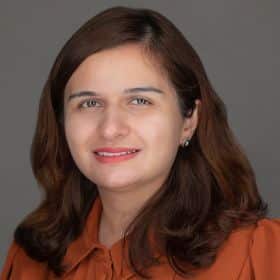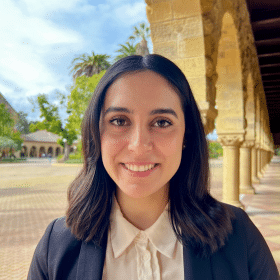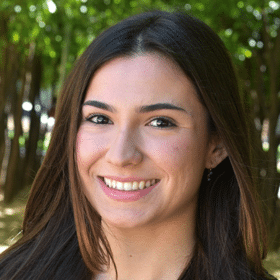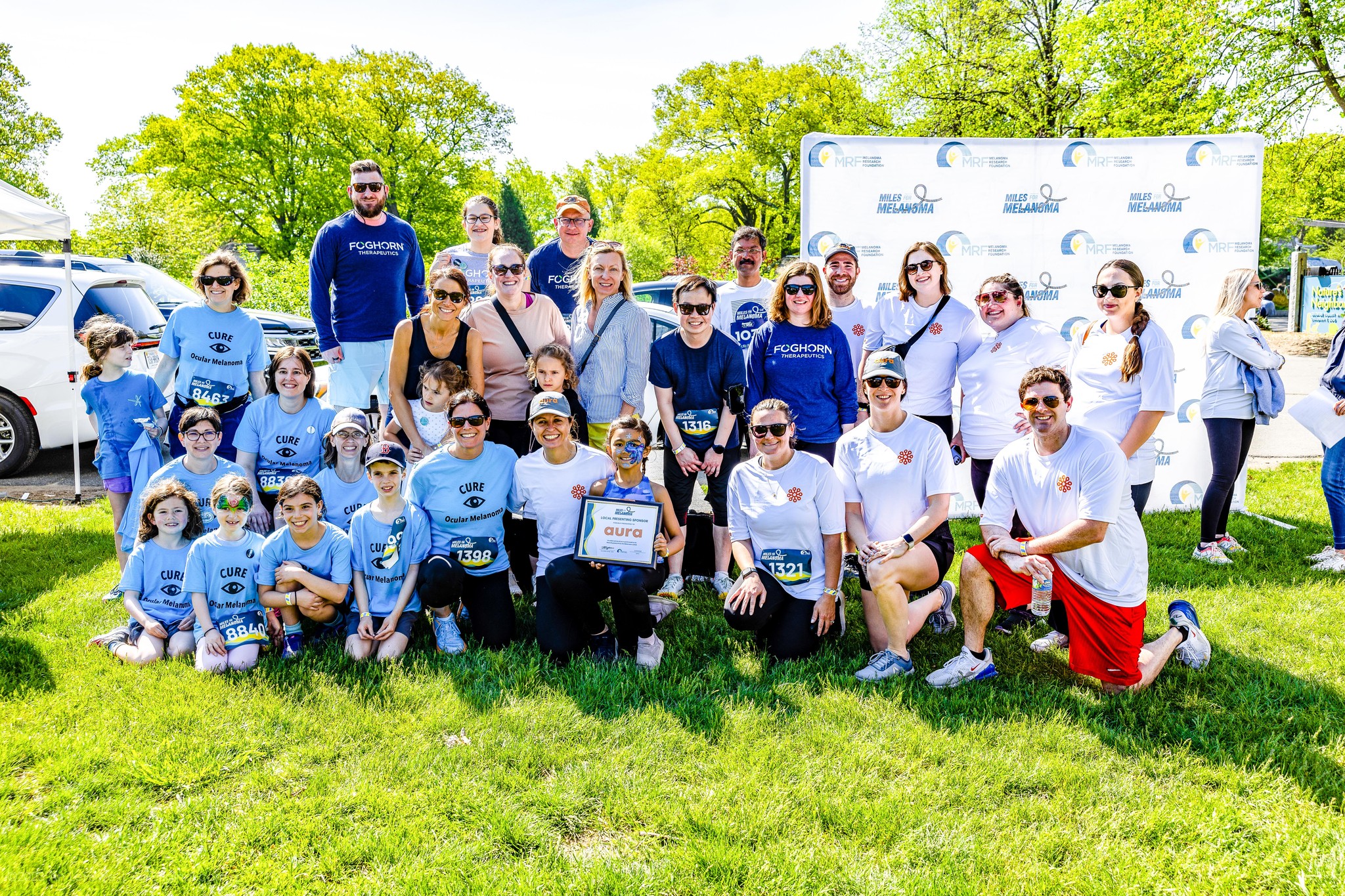
Pharmacodynamic effect of Radvax on microbiome-specific T cells
Pharmacodynamic effect of Radvax on microbiome-specific T cells
Alexander Huang, MD
| Co-PI | Tara Mitchell, MD |
|---|---|
| Award Type | Pilot Proposal |
| Institution | The Trustees of the University of Pennsylvania |
| Donor Support | The Brodman Charitable Fund & Friends |

Radiation can be used as a vaccine, to increase the effect of immunotherapy. We call this Radvax, which is promising. Even in melanoma patients who failed anti-PD-1 treatment, 44% of patients had their tumor shrink when radiation was added. We need to understand when and how to use radiation with other immunotherapies. One of the most important breakthroughs recently is the idea that the bacteria in our intestines can impact how a patient responds to immunotherapy. In this pilot study, we will study the effect of Radvax treatment on CD8 T cells that recognize these intestinal bacteria. The hope is that this information can eventually be used to predict who will benefit from immunotherapy and who will get immune side effects. We will study this in a Radvax clinical study where melanoma patients receive radiation and a combination of two immune checkpoint blockade antibodies targeting PD-1 and CTLA-4. Understanding how to combine radiotherapy with immunotherapy will give us new treatment options for cancer patients.

CD40L-augmented tumor infiltrating lymphocyte expansion from core biopsies
CD40L-augmented tumor infiltrating lymphocyte expansion from core biopsies
Lilit Karapetyan, MD, MS
| Award Type | Pilot Proposal |
|---|---|
| Institution | H. Lee Moffitt Cancer Center & Research Institute, Inc |
| Donor Support | The Brodman Charitable Fund & Friends |

Tumor infiltrating lymphocyte (TIL) therapy represents a promising approach for the treatment of patients whose disease does not benefit from conventional immunotherapies. While TIL resulted in tumor shrinkage or disappearance in approximately one third of patients with advanced melanoma, it has become increasingly important to develop novel strategies for TIL ex vivo expansion to develop superior TIL in greater numbers and anti-tumor activity that when adoptively transferred into patients will provide improved rates of response and enhanced clinical benefit. Current standards for TIL therapy include surgical excision of patient’s tumor typically from the most accessible metastatic sites, growth of TIL outside of patient’s body in cultures supported by Interleukin-2 (aka T cell growth factor; TCGF) and subsequent infusion of these expanded TIL into patients after undergoing chemotherapy. The first part of the project evaluatesif the quality of TIL can be improved through addition of a combination costmulatory CD40L-4-1BB antibody into ex vivo TIL cultures. We hypothesize that CD40L-4-1BB will increase number of TILs and result in production of better quality of TIL which is characterized by higher percentage of tumor specific so called “reactive” TIL. Adding additional growth molecules during growth of TIL outside of body hasthe potential to improve TIL characteristics and translate to improved responses to TIL therapy and survival of patients with melanoma. The second part of this project investigates whether TIL can successfully growth from core biopsy samples and evaluates what unique clinical, pathological, and immunological characteristics of tumor tissue impact the quality of the TIL product to inform best anatomic sites for initial TIL harvest. Current standard of performing surgery of tumors to growth TIL is mainly based on targeting either skin or lymph node samples. Tumors are heterogenous and with this strategy visceral metastases are often not used to grow TIL, indeed, those metastatic sites also appear to determine disease outcome. We postulate that obtaining tumor cores from visceral metastatic locations such as lung, liver will result in superior generation of tumor-reactive TIL outgrowth and effector functionality. We will obtain additional cores “passes” from biopsies which were ordered as standard of care procedure for generation of TIL and study how the TME of core biopsies impacts the quality of expanded TIL. The studies will involve morphological and cellular interrogation of tumor sections and profiling of the TIL product. If successful, these studies will establish a workflow for effective outgrowth of TIL from core biopsies which can avoid the need for additional surgical procedures for patients with advanced melanoma. Furthermore, this strategy will open a new avenue for patients those tumor metastatic locations would otherwise disqualify them from access to receiving TIL therapy due to their “unresectable” tumors.

Design of sun protection/melanoma prevention materials in LatinX caregivers
Design of sun protection/melanoma prevention materials in LatinX caregivers
Alondra Valencia
| Mentor | Dawn Siegel, MD and Jean Tang, MD, PhD |
|---|---|
| Award Type | Medical Student Award |
| Institution | Stanford University School of Medicine |

Teenagers who get five or more sunburns between the age of 15 and 20 have an increased risk of getting skin cancer or melanoma. Individuals with darker skin tones have worse outcomes. Parents can influence their children’s’ exposure to sun by helping them avoid direct sunlight between 10am to 2pm, providing sun-protective clothing, and applying sunscreen, however these efforts are often low particularly in parents of children with darker skin tones. While skin cancer occurs less often in children it is important to protect their skin from the sun and reduce their risk of melanoma and other skin cancers. English and Spanish speaking patients and caregivers who self-identify as Hispanic/Latino will be surveyed and interviewed to better understand caregiver knowledge about melanoma awareness and beliefs influencing sun protective in LatinX communities. These interviews will guide the creation of sun
protection education and melanoma prevention materials (handouts, videos, or news media interviews) to address the needs of LatinX patients.

The Relationship Between Skin Tone and Molecular Alterations in Melanoma
The Relationship Between Skin Tone and Molecular Alterations in Melanoma
Vanessa Weir
| Mentor | Veronica Rotemberg, MD, PhD and Alexander Shoushtari, MD |
|---|---|
| Award Type | Medical Student Award |
| Institution | Memorial Sloan Kettering Cancer Center (MSK) |
| Donor Support | Looney Legacy Foundation |

Melanoma is the deadliest type of skin cancer. In addition to genetics, increased sun exposure may put individuals at a higher risk for developing melanoma, although this is reported only in lighter skin populations. The relationship between skin tone, genes that may lead to melanoma, and the biological makeup of melanoma tumors is not well understood in diverse populations. The aim of this study is to understand how skin tone may influence the genetic and molecular causes of advanced melanoma.

Frozen Section of Melanoma: Accuracy at an Experienced Institution
Frozen Section of Melanoma: Accuracy at an Experienced Institution
Tissiana Vallecillo
| Mentor | Linda Yin, MD, BA, Eric Moore, MD, and Santiago Romero-Brufau, PhD |
|---|---|
| Award Type | Medical Student Award |
| Institution | MAYO Clinic, Rochester, MN |
| Donor Support | The Craig P. Merkel and James K. Saunders Memorial Award |

Patients with melanoma of skin in the head and neck region are at high risk for death from their cancer despite surgical treatment. Currently, treatment consists of surgical removal of the tumor and a biopsy of the first lymph node that receives drainage from the affected area. This lymph node is called the sentinel lymph node. If the sentinel lymph node biopsy is positive, patients have the choice of undergoing further surgery to remove all lymph nodes that drain the affected area, or to keep an eye on the remaining lymph nodes through repeat exams with their doctor and ultrasound tests. Studies in melanoma do not show that removing the rest of the draining lymph nodes decreases the risk of death from melanoma, but it does decrease the risk of cancer coming back in the neck. In discussion with their surgeons, many patients opt to undergo repeat ultrasounds and avoid another procedure to remove the rest of the lymph nodes given the limited benefits of doing additional surgery. However, this is not always a good option for patients that live far away from medical care. Frozen section is a pathology technique that allows for analysis of tissue samples immediately while the patient is still asleep under anesthesia, returning a diagnosis in 20-30 minutes. However, detecting melanoma on frozen section analysis has traditionally been challenging. This study will investigate the accuracy of frozen section diagnosis in melanoma in an institution that performs this testing regularly. If it proves to be accurate, then it would be possible to use frozen section diagnosis to determine whether the sentinel lymph node is positive, and whether removal of the rest of the lymph nodes is warranted. If the latter can be done under the same surgery, then more patients may elect to choose this option. It could potentially save many patients from a second surgery and reduce the risk of cancer coming back in the neck.





Recent Comments